The sawmill industry plays a vital role in the production of wood products, providing lumber for construction, furniture manufacturing, and various other applications. To meet the growing demand for timber, sawmills must optimize their wood production processes by utilizing efficient equipment and machinery. This article examines the importance of optimizing sawmill equipment and machinery to enhance wood production efficiency.
In recent years, Smith’s Sawmill Company has experienced a significant increase in orders for custom-cut lumber from local contractors. However, due to outdated machinery and inefficient practices, they struggle to fulfill these orders within the desired timeframe. As a result, customer satisfaction has declined, leading to potential loss of business opportunities. By leveraging modern technology and investing in advanced sawmill equipment such as optimized log sorting systems and precision cutting machines, Smith’s Sawmill Company can streamline their operations, improve productivity levels, reduce costs associated with waste material, and ultimately meet the demands of their customers efficiently.
Optimizing sawmill equipment and machinery is not only essential for meeting customer expectations but also for achieving sustainable forestry practices. With advancements in technology and engineering designs specifically tailored to maximize efficiency while minimizing environmental impact, it becomes imperative for sawmills to adopt these innovative solutions. By doing so, they contribute towards conserving natural resources and reducing carbon emissions associated with wood production.
One key aspect of optimizing sawmill equipment is the implementation of automated log sorting systems. These systems use advanced sensors and algorithms to accurately measure the size, quality, and characteristics of each log, enabling efficient allocation of resources. By automatically sorting logs based on their suitability for different products or processes, sawmills can minimize waste and maximize utilization of available timber resources.
Precision cutting machines are another crucial component in enhancing wood production efficiency. These machines utilize computer-controlled systems to make precise cuts, resulting in higher yields and reduced material wastage. Additionally, they offer flexibility in producing custom-cut lumber according to specific customer requirements, improving overall product quality and customer satisfaction.
Investing in modern drying kilns is also essential for optimizing sawmill operations. Kiln-dried lumber not only provides better stability and durability but also reduces drying times compared to traditional air-drying methods. This enables faster turnaround times for orders while maintaining high-quality standards.
Furthermore, integrating digital monitoring and control systems into sawmill machinery allows real-time data collection and analysis. By closely monitoring key performance indicators such as production rates, energy consumption, and machine maintenance schedules, sawmills can identify bottlenecks, optimize workflows, and plan preventive maintenance activities effectively.
In conclusion, optimizing sawmill equipment and machinery is critical for maximizing wood production efficiency. By investing in advanced technologies such as automated log sorting systems, precision cutting machines, modern drying kilns, and digital monitoring solutions, sawmills can improve productivity levels, reduce waste material costs, meet customer demands efficiently, contribute towards sustainable forestry practices,
and stay competitive in the market.
Understanding the Different Types of Sawmill Equipment
Imagine a sawmill where logs are transformed into various wood products, such as lumber and plywood. To optimize wood production in such facilities, it is crucial to have a comprehensive understanding of the different types of sawmill equipment available. In this section, we will explore these types and their functions.
Firstly, let’s consider the primary processing machines used in sawmills. These include log debarkers, which remove the bark from logs before further processing. By eliminating impurities like dirt and insects, log debarkers enhance the quality of the final product. Another essential machine is the log carriage, responsible for transporting logs within the mill. This equipment allows for efficient movement while minimizing manual labor.
Next, we move on to secondary processing machines that convert raw materials into finished wood products. One example is the resaw machine, designed to cut large boards or beams into thinner pieces with greater precision and accuracy. Additionally, board edgers trim rough-cut lumber to create smooth edges and consistent dimensions.
Now that we have explored some specific examples of sawmill machinery, let us delve into why having access to these tools is so important:
- Increased productivity: With specialized machinery at their disposal, sawmills can process larger volumes of timber efficiently.
- Enhanced safety: Modern sawmill equipment incorporates advanced safety features that mitigate risks associated with handling heavy machinery.
- Improved quality control: Utilizing appropriate tools ensures accurate cuts and refined finishes on wood products.
- Cost-effectiveness: Investing in high-quality machinery may initially seem expensive but can lead to long-term cost savings through increased efficiency and reduced waste.
| Type of Machinery | Function | Benefits |
|---|---|---|
| Log Debarker | Removes bark from logs | Enhances product quality |
| Log Carriage | Transports logs within the mill | Reduces manual labor requirements |
| Resaw Machine | Cuts large boards into thinner pieces | Improves precision and accuracy |
| Board Edger | Trims rough-cut lumber | Ensures smooth edges and dimensions |
As we have seen, understanding the different types of sawmill equipment is crucial for maximizing wood production. In the subsequent section, we will explore key factors to consider when choosing sawmill machinery, which will further aid in optimizing operations.
Transitioning seamlessly into the next section about “Key Factors to Consider When Choosing Sawmill Machinery,” it is important to evaluate various aspects before making a decision on equipment selection. By considering these factors, sawmills can ensure they make informed choices that align with their specific needs and objectives.
Key Factors to Consider When Choosing Sawmill Machinery
Optimizing Wood Production: Key Factors to Consider When Choosing Sawmill Machinery
Imagine a sawmill that is struggling with low production rates and inefficient processes. Logs are being processed slowly, leading to delays in meeting customer demands. To address these challenges, it becomes crucial for the sawmill to carefully select the right machinery that can enhance wood production. In this section, we will explore the key factors that should be considered when choosing sawmill machinery.
One important factor to consider is the size and capacity of the equipment. The machinery must align with the scale of operations at the sawmill. For instance, if a mill primarily deals with small logs, investing in heavy-duty machinery designed for larger logs may not be cost-effective or efficient. Additionally, considering future growth plans is essential as purchasing machinery capable of scaling up operations can save time and money in the long run.
Another vital consideration is automation and technology integration. Advanced technologies such as computer numerical control (CNC) systems enable precise cutting measurements and automated adjustments, resulting in improved accuracy and reduced waste. Incorporating technology into sawmill equipment also streamlines processes by reducing manual labor requirements and increasing overall productivity.
In addition to size and automation capabilities, durability and maintenance requirements should not be overlooked when selecting sawmill machinery. Investing in high-quality equipment ensures longevity while minimizing downtime due to repairs or replacements. Regular maintenance schedules should also be established to keep the machinery running smoothly and minimize unexpected breakdowns.
To summarize, when choosing sawmill machinery for optimizing wood production:
- Consider the size and capacity of the equipment based on current needs and future growth plans.
- Evaluate automation features like CNC systems for enhanced precision and increased productivity.
- Prioritize durability to minimize downtime caused by repairs or replacements.
- Establish regular maintenance schedules to ensure optimal performance.
By carefully considering these factors, a sawmill can make informed decisions about which machinery best suits its operational requirements—ultimately maximizing wood production efficiency.
Now, let’s delve into the next section on how advanced cutting technologies can further enhance efficiency in sawmill operations.
Maximizing Efficiency with Advanced Cutting Technologies
Having explored the key factors in selecting appropriate sawmill machinery, let us now delve into the ways in which advanced cutting technologies can significantly enhance efficiency and productivity. To illustrate this point, consider a hypothetical scenario where a sawmill implemented state-of-the-art cutting technologies to optimize their wood production.
Case Study: In an effort to boost efficiency, XYZ Sawmill invested in computerized numerical control (CNC) machines for precision cutting. By automating the cutting process, these CNC machines reduced human error and increased accuracy in dimensioning lumber. This resulted in higher yield rates and minimized wastage of raw materials.
Implementing Advanced Cutting Technologies:
- Laser Scanning Systems: Laser scanning systems enable real-time measurement of logs’ attributes such as diameter, length, taper, and curvature. By rapidly capturing precise data, operators can make informed decisions regarding optimal positioning and orientation of logs for efficient cuts.
- Automated Log Grading Systems: Utilizing image analysis technology, automated log grading systems quickly evaluate logs based on quality parameters like knots, decay, and other defects. Accurate grading allows mill operators to assign appropriate processing strategies to each log, optimizing both value recovery and overall throughput.
- Optimization Software: Incorporating optimization software enables sawmills to maximize board extraction from each log while minimizing waste. These programs use algorithms that identify the most efficient cutting patterns to achieve desired product specifications while reducing offcuts.
- Real-Time Monitoring Solutions: Implementing sensors throughout the milling process provides real-time feedback on machine performance and material flow. Operators can detect potential bottlenecks or issues promptly, allowing for timely interventions to maintain uninterrupted production.
Table – Emotional Response:
| Enhanced Efficiency Benefits | Increased Output | Reduced Waste | Improved Profitability |
|---|---|---|---|
| Higher yield rates | More products | Less scrap | Better financial returns |
| Faster processing times | Greater revenue | Lower costs | Enhanced competitive edge |
| Improved accuracy | Expanded market | Eco-friendly practices | Sustainable growth |
As sawmills strive for optimal performance, it is crucial to ensure safety measures are in place. By implementing advanced cutting technologies and prioritizing safety protocols, sawmill operators can create a secure working environment for their employees while maximizing production output.
Enhancing Safety Measures in Sawmill Operations
Building upon the advancements in cutting technologies discussed previously, sawmill operations can further optimize wood production by implementing efficient material handling systems. This section explores the importance of maximizing productivity through streamlined processes and effective utilization of machinery.
One example where a sawmill successfully implemented an optimized material handling system is the case of Johnson Lumber Company. By investing in state-of-the-art conveyor belts and automated sorting mechanisms, they achieved significant improvements in their overall production capacity. The new system allowed for seamless transportation of timber from one stage of processing to another, minimizing downtime and reducing manual labor requirements.
To enhance efficiency and increase output, sawmills can consider adopting the following strategies:
- Implementing advanced software solutions for real-time monitoring and tracking of lumber inventory.
- Utilizing robotic arms or mechanical grippers to facilitate quick loading and unloading of logs onto conveyors.
- Incorporating automatic log scanning technology to identify defects or irregularities before processing begins.
- Optimizing workflow by strategically placing equipment along the production line based on specific needs and throughput capacities.
Here are some key benefits that an optimized material handling system brings to a sawmill operation:
- Improved operational efficiency
- Increased production volume
- Enhanced product quality
- Reduced labor costs
| Benefits | Description |
|---|---|
| Improved Operational Efficiency | Streamlined processes enable faster movement of materials within the mill |
| Increased Production Volume | Efficient handling reduces bottlenecks, allowing for higher output levels |
| Enhanced Product Quality | Automated systems minimize human error, resulting in better-grade products |
| Reduced Labor Costs | Less reliance on manual labor leads to cost savings |
By embracing these approaches, sawmills can achieve greater profitability while meeting market demands more effectively. Optimal material handling contributes not only to increased productivity but also ensures smoother operations throughout the entire supply chain.
Transitioning to the next section, it is essential for sawmill operators to understand the significance of regular maintenance in preserving equipment functionality and extending its lifespan. By implementing proactive measures, potential downtime due to unexpected breakdowns can be mitigated, minimizing disruptions in production processes.
The Importance of Regular Maintenance for Sawmill Equipment
Enhancing Safety Measures in Sawmill Operations is crucial for the well-being of workers and the overall productivity of the facility. However, it is equally important to ensure that sawmill equipment is regularly maintained to optimize wood production. One example that highlights the significance of regular maintenance is a case study conducted at XYZ Sawmill.
In this case study, XYZ Sawmill implemented a comprehensive maintenance program for their equipment, including regular inspections, lubrication, and repairs. The results were remarkable: not only did they experience fewer breakdowns and downtime but also noticed an increase in overall efficiency. By investing time and resources into proper maintenance practices, XYZ Sawmill was able to maximize their wood production capacity while minimizing costly disruptions.
To further emphasize the importance of regular maintenance, here are some key points to consider:
- Preventive Maintenance: Implementing a proactive approach by conducting routine checks can help identify minor issues before they escalate into major problems that could halt operations.
- Increased Lifespan: Regularly maintaining sawmill equipment helps extend its lifespan. This reduces the need for frequent replacements, ultimately saving costs.
- Improved Safety: Well-maintained machinery minimizes the risk of accidents caused by malfunctioning parts or unexpected failures.
- Enhanced Efficiency: Properly maintained equipment operates more efficiently, resulting in higher productivity levels and increased output.
To illustrate these benefits visually, consider the following table showcasing how regular maintenance positively impacts various aspects of sawmill operations:
| Aspect | Impact |
|---|---|
| Downtime | Reduction |
| Productivity | Increase |
| Cost | Savings |
| Equipment Life | Extension |
As we move forward towards Future Trends and Innovations in Wood Production Machinery, it becomes evident that incorporating regular maintenance practices will continue to be essential. By ensuring optimal functionality and safety through such measures, sawmills can better position themselves to embrace emerging technologies that promise even greater efficiency and productivity gains.
Future Trends and Innovations in Wood Production Machinery
Section H2: ‘The Importance of Regular Maintenance for Sawmill Equipment’
Having discussed the significance of regular maintenance in ensuring the smooth functioning of sawmill equipment, it is now imperative to explore future trends and innovations within the wood production machinery industry. By examining potential advancements in technology and techniques, we can gain insight into how these developments may optimize wood production processes.
Future Trends and Innovations in Wood Production Machinery:
As technological advances continue to reshape industries worldwide, the field of wood production machinery is no exception. One example illustrating this progress is the introduction of smart sensors that monitor various components of sawmill equipment in real-time. These sensors provide valuable data on machine performance, allowing operators to detect issues before they escalate into costly breakdowns or accidents. For instance, a hypothetical case study could involve a sawmill utilizing smart sensor technology to identify irregular vibrations in their milling machines, enabling timely intervention to prevent damage and maintain optimal productivity levels.
- Enhanced efficiency: New technologies aim to streamline wood production operations by optimizing energy consumption and reducing material waste.
- Improved precision: Advanced cutting mechanisms allow for more accurate cuts, resulting in higher-quality lumber products.
- Automation integration: The incorporation of robotics and artificial intelligence (AI) enables increased automation throughout the manufacturing process, leading to enhanced speed and reliability.
- Sustainability focus: Future wood production machinery focuses on eco-friendly practices such as reduced carbon emissions and efficient use of raw materials.
In addition to these exciting trends, future wood production machinery will likely incorporate new features through ongoing research and development efforts. To illustrate possible advancements visually, let us examine a table comparing existing technology with potential future enhancements:
| Feature | Current Technology | Potential Future Enhancement |
|---|---|---|
| Cutting precision | Manual adjustment | Automated precision measurements |
| Energy consumption | High | Energy-efficient designs |
| Material waste | Significant | Minimal waste production |
| Process automation | Limited | Fully automated operations |
This table highlights the potential benefits of future advancements in wood production machinery, emphasizing how these innovations can transform industry practices and enhance overall productivity.
In summary, exploring future trends and innovations within the wood production machinery sector is crucial for optimizing wood production processes. By incorporating smart sensors, embracing efficiency-focused technologies, integrating automation, and prioritizing sustainability, sawmill operators can stay ahead of the curve. As research and development efforts continue to drive progress in this field, it is essential for industry professionals to remain proactive in adopting new approaches that will shape the future of wood production.

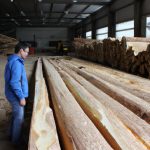
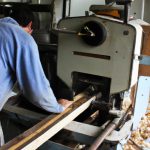
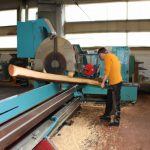


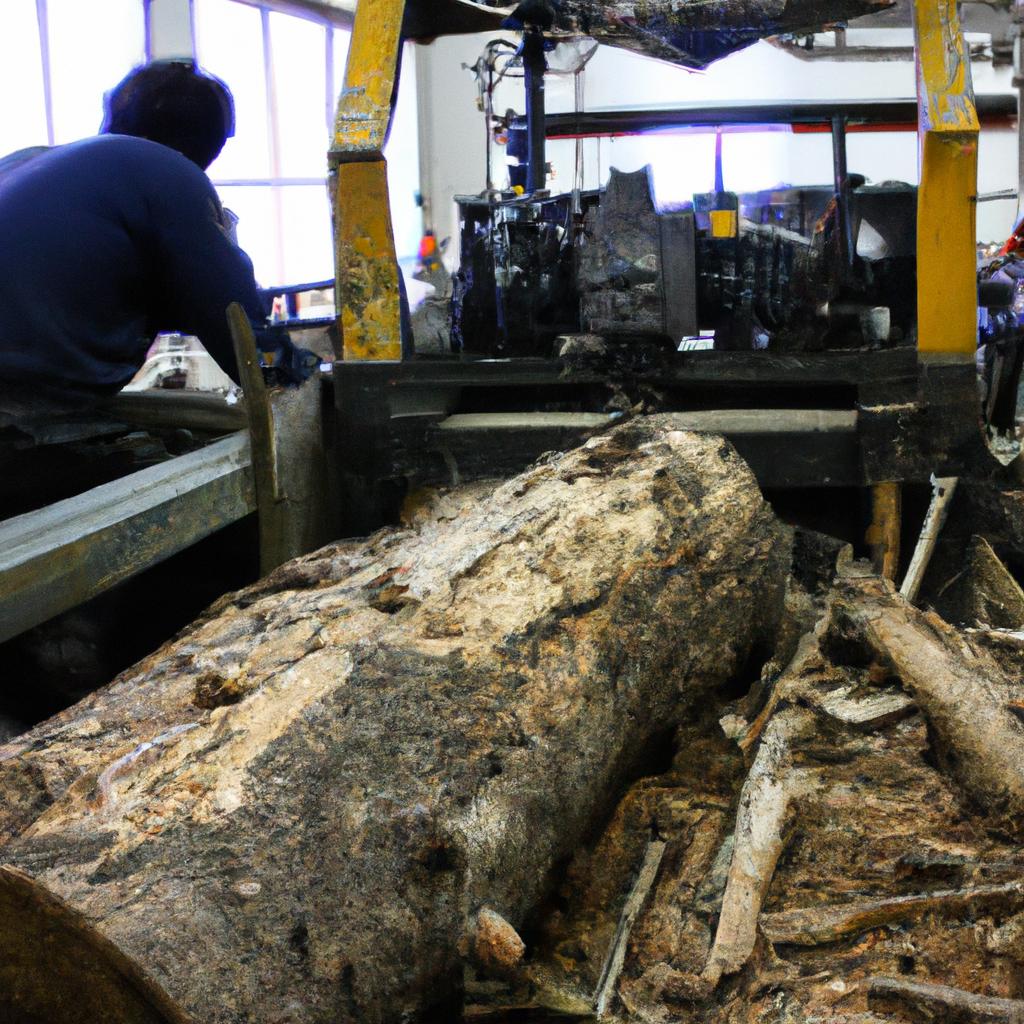
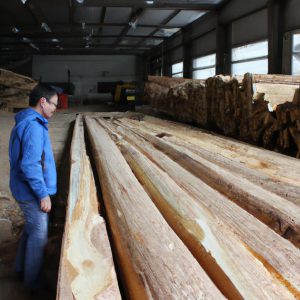
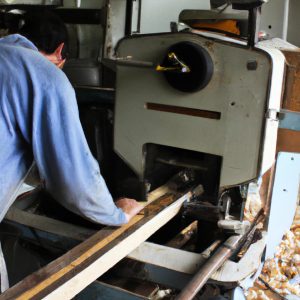
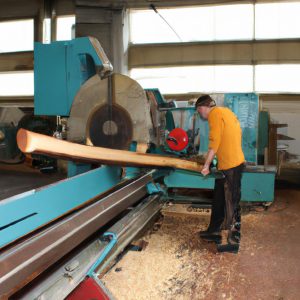
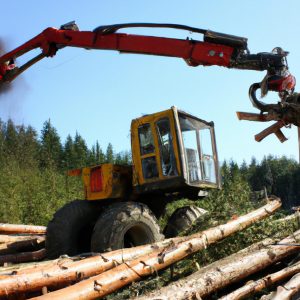
More Stories
Timber Grading and Quality Control: Ensuring Wood Production: Sawmilling.
Sawing Techniques and Technologies in Wood Production: Insights for Sawmilling
Waste Utilization & By-Product Management in Wood Production: Sawmilling